Dances with Wolves
8.4 /10 1 Votes
82% Rotten Tomatoes 72% Metacritic Genre Adventure, Drama, Western Country United States | 8/10 IMDb 4/4 Roger Ebert Duration | |||||||||||||||||||||||||||||||||
 | ||||||||||||||||||||||||||||||||||
Language EnglishLakotaPawnee Release date October 19, 1990 (1990-10-19) (Washington, D.C. premiere)November 9, 1990 (1990-11-09) (United States, limited) Based on Dances with Wolves by Michael Blake Writer Michael Blake (screenplay), Michael Blake (novel) Initial release October 19, 1990 (Washington, D.C.) Cast (Lieutenant Dunbar), (Stands With A Fist), (Kicking Bird), (Wind In His Hair), Floyd Red Crow Westerman (Ten Bears), (Black Shawl)Similar movies The Last Samurai , Lost in Translation , Magnolia , The Fisher King , 21 Grams , Cold Mountain Tagline Inside everyone is a frontier waiting to be discovered. | ||||||||||||||||||||||||||||||||||
Dances with wolves 1990 kevin costner western movie hd
Dances with Wolves is a 1990 American epic Western film directed by, produced by, and starring Kevin Costner. It is a film adaptation of the 1988 book of the same name by Michael Blake and tells the story of a Union Army lieutenant who travels to the American frontier to find a military post and his dealings with a group of Lakota Indians.
Contents
- Dances with wolves 1990 kevin costner western movie hd
- Dances with wolves 1990 part 1 filming location video kevin costner
- Plot
- Production
- Reception
- Accolades
- Sequel
- Alternate version
- Soundtrack
- Dances with wolves 1990 filming location video kevin costner
- References
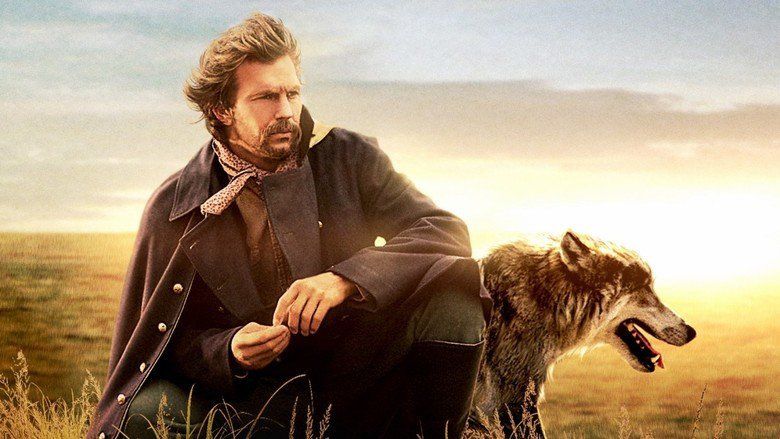
Costner developed the film with an initial budget of $15 million. Dances with Wolves had high production values and won seven Academy Awards including Best Picture and the Golden Globe Award for Best Motion Picture – Drama. Much of the dialogue is spoken in Lakota with English subtitles. It was shot in South Dakota and Wyoming, and translated by Albert White Hat, the chair of the Lakota Studies Department at Sinte Gleska University.
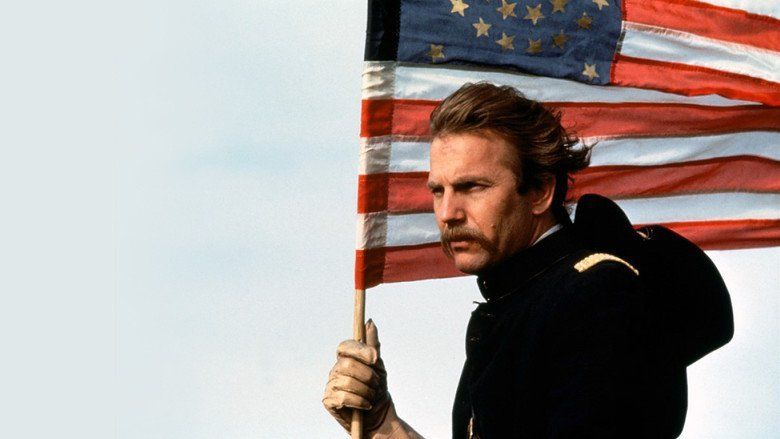
The film is credited as a leading influence for the revitalization of the Western genre of filmmaking in Hollywood. In 2007, Dances with Wolves was selected for preservation in the United States National Film Registry by the Library of Congress as being "culturally, historically, or aesthetically significant".

Dances with wolves 1990 part 1 filming location video kevin costner
Plot
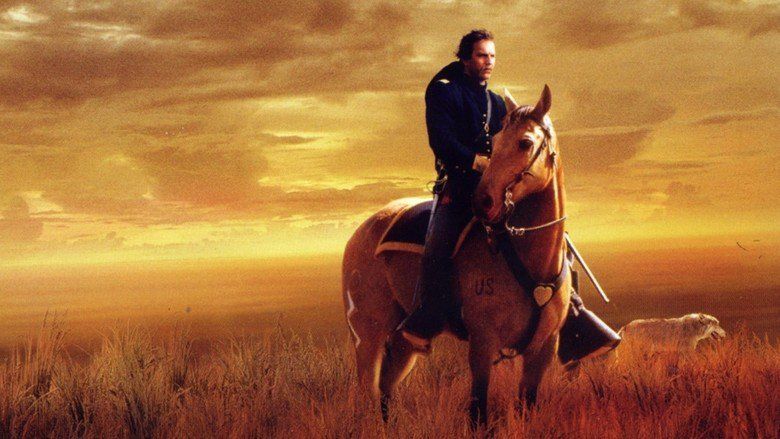
In 1863, First Lieutenant John J. Dunbar is wounded in battle at St. David's Field in Tennessee. Choosing death in battle over amputation of his leg, he takes a horse and rides up to and along the Confederate lines. Despite numerous pot shots, the Confederates fail to hit him, and while they are distracted, the Union Army successfully attacks the line. Dunbar survives, receives a citation for bravery, and proper medical care. He recovers fully and is awarded Cisco, the horse who carried him, and his choice of posting. Dunbar requests a transfer to the western frontier so he can see it before it disappears.
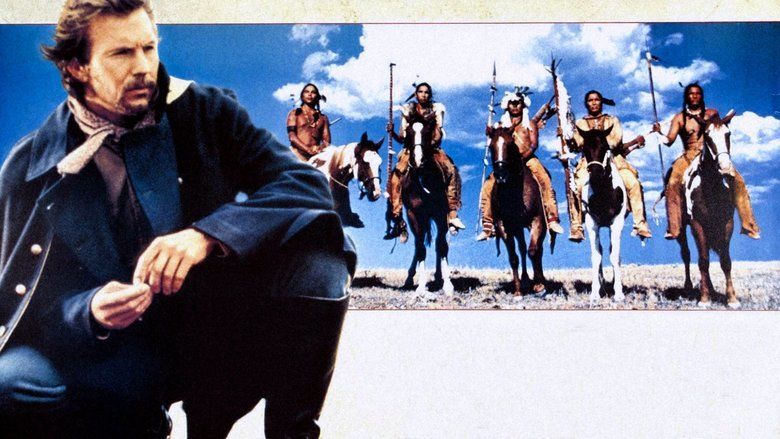
Dunbar is transferred to Fort Hays, a large fort presided over by an unhinged major who despises Dunbar's enthusiasm, but agrees to post him to the furthest outpost they have, Fort Sedgewick, and kills himself shortly afterwards. Dunbar travels with Timmons, a mule wagon provisioner; they arrive to find the fort deserted and in poor condition. Despite the threat of nearby Indian tribes, Dunbar elects to stay and man the post himself. He begins rebuilding and restocking the fort and prefers the solitude, recording many of his observations in his diary. Timmons is killed by Pawnee Indians on the journey back to Ft. Hays; his death, together with that of the major who had sent them there, prevents other soldiers from knowing of Dunbar's assignment, and no other soldiers arrive to reinforce the post.
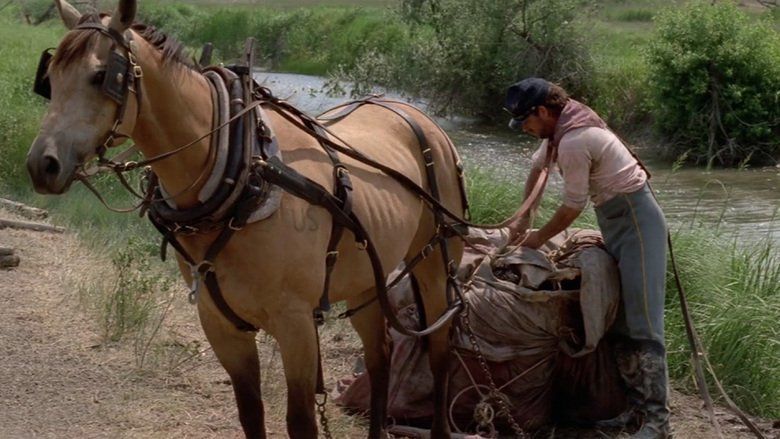
Dunbar initially encounters his Sioux neighbors when attempts are made to steal his horse and intimidate him. Deciding that being a target is a poor prospect, he decides to seek out the Sioux camp and attempt dialogue, rather than wait. On his way he comes across Stands With A Fist, the white adopted daughter of the tribe's medicine man Kicking Bird, who is ritually mutilating herself while mourning for her husband. Dunbar brings her back to the Sioux to recover, and some of the tribe begin to respect him. Eventually, Dunbar establishes a rapport with Kicking Bird, the warrior Wind In His Hair and the youth Smiles A Lot, initially visiting each other's camps. The language barrier frustrates them, and Stands With A Fist acts as interpreter, although with difficulty; she only remembers English from her early childhood before the rest of her family was killed during a Pawnee raid.
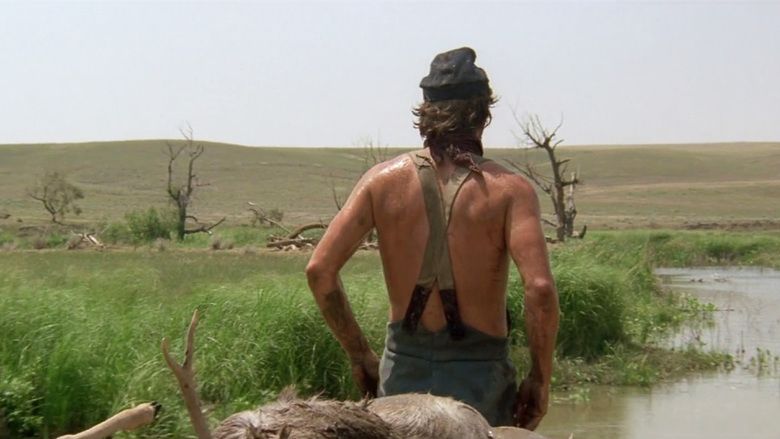
Dunbar finds that the stories he had heard about the tribe were untrue, and he develops a growing respect and appreciation for their lifestyle and culture. Learning their language, he is accepted as an honored guest by the Sioux after he tells them of a migrating herd of buffalo and participates in the hunt. When at Fort Sedgewick, Dunbar also befriends a wolf he dubs "Two Socks" for its white forepaws. Observing Dunbar and Two Socks chasing each other, the Sioux give him the name "Dances With Wolves." During this time, Dunbar also forges a romantic relationship with Stands With A Fist and helps defend the village from an attack by the rival Pawnee tribe. Dunbar eventually wins Kicking Bird's approval to marry Stands With A Fist, and abandons Fort Sedgewick.
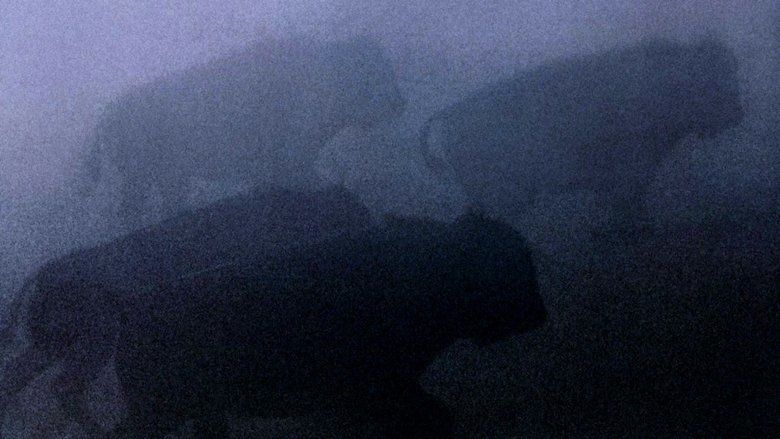
Because of the growing Pawnee and white threat, Chief Ten Bears decides to move the tribe to its winter camp. Dunbar decides to accompany them but must first retrieve his diary from Fort Sedgewick as he realizes that it would provide the army with the means to find the tribe. However, when he arrives he finds the fort reoccupied by the U.S. Army. Because of his Sioux clothing, the soldiers open fire, killing Cisco and capturing Dunbar, arresting him as a traitor. Senior officers interrogate him, but Dunbar cannot prove his story, as a corporal has found his diary and kept it for himself. Having refused to serve as an interpreter to the tribes, Dunbar is charged with desertion and transported back east as a prisoner. Soldiers of the escort shoot Two Socks when the wolf attempts to follow Dunbar, despite Dunbar's attempts to intervene.
Eventually, the Sioux track the convoy, killing the soldiers and freeing Dunbar. They assert that they do not see him as a white man, but as a Sioux warrior called Dances With Wolves. But, at the winter camp, Dunbar decides to leave with Stands With A Fist because his continuing presence would endanger the tribe. As they leave, Smiles A Lot returns the diary, which he recovered during Dunbar's liberation, and Wind In His Hair shouts to Dunbar, reminding him that he is Dunbar's friend, a contrast to their original meeting where he shouted at Dunbar in hostility. U.S. troops are seen searching the mountains but are unable to locate them, while a lone wolf howls in the distance. An epilogue states that thirteen years later the last remnants of the free Sioux were subjugated to the American government, ending the conquest of the Western frontier states and the livelihoods of the tribes on the Great Plains.
Production
Originally written as a spec script by Michael Blake, it went unsold in the mid-1980s. However, Kevin Costner had starred in Blake's only previous film, Stacy's Knights (1983), and encouraged Blake in early 1986 to turn the Western screenplay into a novel to improve its chances of being produced. The novel was rejected by numerous publishers but finally published in paperback in 1988. The rights were purchased by Costner, with an eye on directing it. Actual production lasted for four months, from July 18 to November 23, 1989. Most of the movie was filmed on location in South Dakota, mainly on private ranches near Pierre and Rapid City, with a few scenes filmed in Wyoming. Specific locations included the Badlands National Park, the Black Hills, the Sage Creek Wilderness Area, and the Belle Fourche River area. The bison hunt scenes were filmed at the Triple U Buffalo Ranch outside Fort Pierre, South Dakota, as were the Fort Sedgewick scenes, the set being constructed on the property.
Reception
Defying expectation, Dances with Wolves proved instantly popular, eventually earning great critical acclaim, and making $184 million in U.S. box office sales and $424 million in total sales worldwide. As of 2017, the film holds a positive review score of 82% on Rotten Tomatoes. CinemaScore reported that audiences gave the film a rare "A+" grade. Because of the film's popularity and lasting impact on the image of Native Americans, the Sioux Nation adopted Costner as an honorary member. At the 63rd Academy Awards ceremony in 1991, Dances with Wolves earned twelve Academy Award nominations and won seven, including Best Writing, Adapted Screenplay (Michael Blake), Best Director (Kevin Costner), and Best Picture of the Year. In 2007, the Library of Congress selected Dances with Wolves for preservation in the United States National Film Registry.
Native American activist and actor Russell Means was less kind about some aspects of the film's technical accuracy. In 2009, he said "Remember Lawrence of Arabia? That was Lawrence of the Plains. The odd thing about making that movie is that they had a woman teaching the actors the Lakota language, but Lakota has a male-gendered language and a female-gendered language. Some of the Indians and Kevin Costner were speaking in the feminine way. When I went to see it with a bunch of Lakota guys, we were laughing." Other Native Americans like Michael Smith (Sioux), Director of San Francisco's long-running annual American Indian Film Festival, said, "There's a lot of good feeling about the film in the Indian community, especially among the tribes. I think it's going to be very hard to top this one."
Some of the criticism was inspired by the fact that the pronunciation is not authentic since only one of the movie's actors was a native speaker of the language. The movie's dialogues in the native language have been lauded as a remarkable achievement. However, other writers have noted that earlier otherwise English-language films, such as Eskimo (1933), Wagon Master (1950) and The White Dawn (1974), had also incorporated Native dialogue.
David Sirota of Salon referred to Dances with Wolves as a "white savior" film, as Dunbar "fully embeds himself in the Sioux tribe and quickly becomes its primary protector." He argued that its use of the "noble savage" character type "preemptively blunts criticism of the underlying White Savior story. The idea is that a film like Dances With Wolves cannot be bigoted or overly white-centric if it at least shows [characters such as] Kicking Bird and Chief Ten Bears as special and exceptional. This, even though the whole story is about a white guy who saves the day."
Writer Richard Grenier was strongly critical of the film. Grenier accused Costner of misrepresenting the Sioux as peaceful, claiming that the film's "portrait of the Sioux, the most bloodthirsty of all Plains Indian tribes and neither pacifists nor environmentalists, is false in every respect".
Accolades
In addition to becoming the first Western film to win an Academy Award for Best Picture since 1931's Cimarron, Dances with Wolves won a number of additional awards, making it one of the most honored films of 1990.
Sequel
The Holy Road, a sequel novel by Michael Blake, the author of both the original Dances with Wolves novel and the movie screenplay, was published in 2001. It picks up eleven years after Dances with Wolves. John Dunbar is still married to Stands with a Fist and they have three children. Stands with a Fist and one of the children are kidnapped by a party of white rangers and Dances with Wolves must mount a rescue mission. As of 2007, Blake was writing a film adaptation, although Kevin Costner was not yet attached to the project. In the end, however, Costner stated he would not take part in this production. Viggo Mortensen has been rumored to be attached to the project, playing Dunbar. As of October 2016, according to IMDb, The Holy Road is a TV mini-series still under development.
Alternate version
One year after the original theatrical release of Dances with Wolves, a four-hour version of the film opened at select theaters in London. This longer cut was titled Dances with Wolves: The Special Edition, and it restored nearly an hour's worth of scenes that had been removed to keep the original film's running time under 3 hours.
In a letter to British film reviewers, director Kevin Costner and producer Jim Wilson addressed their reasons for presenting a longer version of the film:
Why add another hour to a film that by most standards pushes the time limit of conventional movie making? The 52 additional minutes that represent this "new" version were difficult to cut in the first place, and ... the opportunity to introduce them to audiences is compelling.
We have received countless letters from people worldwide asking when or if a sequel would be made, so it seemed like a logical step to enhance our film with existing footage... making an extended version is by no means to imply that the original Dances With Wolves was unfinished or incomplete; rather, it creates an opportunity for those who fell in love with the characters and the spectacle of the film to experience more of both.
The genesis of the 4-hour version of the film was further explained in an article for Entertainment Weekly that appeared ten months after the premiere of the original film. "While the small screen has come to serve as a second chance for filmmakers who can't seem to let their babies go, Kevin Costner and his producing partner, Jim Wilson, hope that their newly completed version will hit theater screens first."
"I spent seven months working on it," Wilson says of the expanded Wolves. He's quick to defend the Oscar-winning version as "the best picture we had in us at the time," yet Wilson also says he's "ecstatic" over the recut. "It's a brand-new picture," he insists. "There's now more of a relationship between Kevin and Stands With a Fist, more with the wolf, more with the Indians—stuff that's integral all through the story."
Of course, exhibitors may not want a longer version of an already widely seen movie, but Wilson remains optimistic. "I don't think the time is now," he acknowledges, "but ideally, there is a point at which it would come out with an intermission, booked into the very best venues in America."
Costner would later claim that he did not work on the creation of the four-hour cut at all.
Soundtrack
Dances with wolves 1990 filming location video kevin costner
References
Dances with Wolves WikipediaDances with Wolves IMDbDances with Wolves Rotten TomatoesDances with Wolves Roger EbertDances with Wolves MetacriticDances with Wolves themoviedb.org
